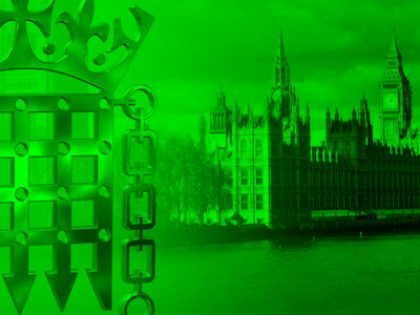Clive says: “Health Canada is trying to ban almost all vaping liquid flavours. This is on top of measures to limit nicotine strengths and marketing. It is the nearest they can get to a prohibition without actually having to prohibit the most promising low-risk rival to cigarettes.
“The likely effects are obvious: more smoking. But in a bizarre twisting of reality and evidence, Health Canada finds that making vaping less attractive relative to smoking will… um … reduce smoking. And that’s how it justifies the measure. We respond with a counter-analysis.”
Health Canada’s position outlined in Proposed vaping products’ flavour regulations and order, June 2021 relies on four documents, two of which it has refused to publish but says it will make available “upon request”.
The letter from the quartet outlines the key points from their 17-page PDF submission to the consultation exercise. It states:
“Health Canada’s case for banning vaping flavours as described in the memorandum supporting the measure is wholly inadequate, and the measure should not proceed on this basis. A realistic evidence-based appraisal would show the measure to be both economically damaging and detrimental to public health. The critical weaknesses are set out in the six sections of this submission and summarised here:
“Section 1. The objective, reducing youth vaping, is ill-conceived. This would be a poor objective if it meant more smoking among young people, fewer adults switching to vaping, and more adults relapsing to smoking. All of these consequences are likely. The objective should be to reduce harms, not just to modify one behaviour in a mix of tobacco and substance use behaviours.
“Section 2. The analysis ignores likely unintended consequences arising from a flavour ban, making the naïve assumption that young people will respond to a flavour ban by doing nothing or something virtuous instead of vaping. However, there is a wide range of possible harmful responses to a vape flavour ban, including smoking, other substance use, black market access and participation, home mixing, and various workarounds. These do not feature in the justification.
“Section 3. The justification is based on a flawed understanding of the causes of teenage vaping and a greatly overstated role for flavours. Vaping, like smoking, is not primarily driven by product features like flavours. It arises from deeper causes – genetics, mental health, parental influence, community environment etc. Leaving the deeper causes intact while modifying a superficial influence will just cause a shuffling in the mix of risk behaviours.
“Section 4. The analysis understates or ignores the significant role that vaping and vaping flavours play in smoking cessation and displacement backed by evidence from multiple sources: clinical trials, observational studies, population data trends, market data and stock analyst insights, economic analyses and natural experiments, and thousands of user testimonies.
“Section 5. Health Canada has not developed the chain of reasoning necessary to show a flavours ban would have an overall positive effect. It would need to go show the flavour ban would positively affect vaping use and uptake, not lead to more adolescent smoking, and would not have adverse effects on adult tobacco use behaviours. This failure is most overt in the cost-benefit analysis.
“Section 6. The cost-benefit analysis on which the justification rests is fundamentally flawed. It is built on a false ‘gateway’ assumption that teenage vaping leads to adult smoking and that the impact of a vaping flavour ban will reduce future smoking. There is no basis for claiming a gateway effect, and an alternative ‘common liability’ explanation for the data is far more credible. Over 93 percent of the public health benefits shown in the cost-benefit analysis break-even case relate to avoided smoking-related impacts. Yet, the evidence suggests vaping is a substitute for smoking and is more likely to divert adolescents from smoking. Under closer examination, the case falls apart.”
References:
- Health Canada, Consultation: Proposed vaping products’ flavour regulations and order, June 2021 [link]
- Health Canada, Regulatory Impact Analysis Statement, June 19, 2021. [link]
- Health Canada, Tobacco Control Directorate / Cannabis Cost-Benefit Analysis Team, Cost-Benefit Analysis, June 2021 [access]
- Industrial Economic Incorporated, Elicitation of Expert Judgements on the Behavioural Impacts of a Nicotine Standard. A report for Tobacco Products Regulatory Office, Health Canada, March 2017. [access]
- Proposed vaping products’ flavour regulations – a response - https://clivebates.com/documents/CanadaFlavourBanSept2021.pdf
Photo Credit:
Image by Settergren from Pixabay
Dave Cross
Journalist at POTVDave is a freelance writer; with articles on music, motorbikes, football, pop-science, vaping and tobacco harm reduction in Sounds, Melody Maker, UBG, AWoL, Bike, When Saturday Comes, Vape News Magazine, and syndicated across the Johnston Press group. He was published in an anthology of “Greatest Football Writing”, but still believes this was a mistake. Dave contributes sketches to comedy shows and used to co-host a radio sketch show. He’s worked with numerous start-ups to develop content for their websites.
Join the discussion
Parliament Fears Two
The Department for Environment, Food and Rural Affairs faced questions from a Conservative MP and, oddly, a member of the Department for Environment, Food and Rural Affairs
Harm Reduction For The Rich
The United Kingdom risks becoming a harm reduction country only for the wealthy, according to Michael Landl of the World Vapers’ Alliance
Sacrificing Health For 2p Cut
Tory Government alienates vaping voters with its mission to cut tax by an unaffordable 2p to attract voters by placing a tax on vape products in the forthcoming budget
Scotland Announces Single-Use Vape Action
A ban on the sale and supply of single-use vapes in Scotland is due to come into effect on 1 April 2025, under proposed legislation published today






-listing400.jpg)




